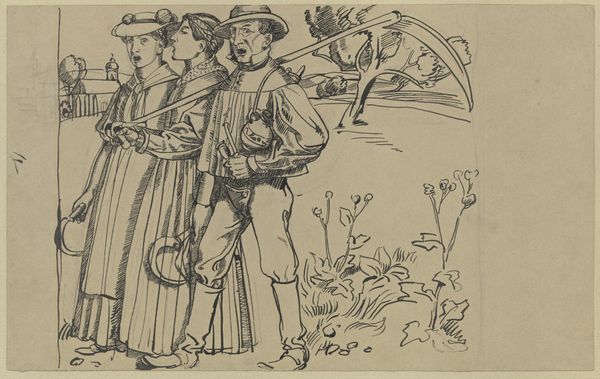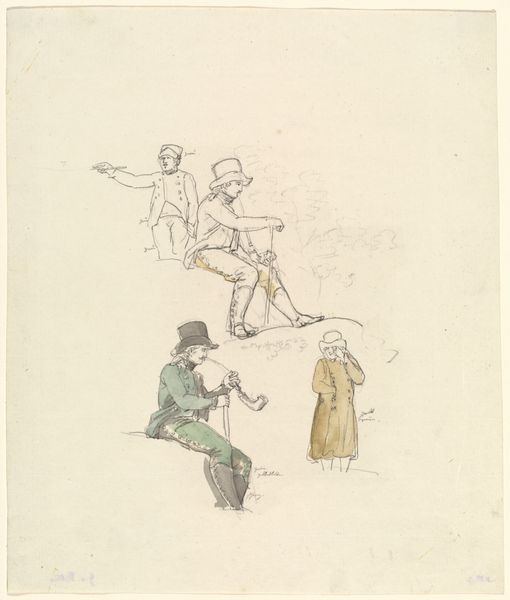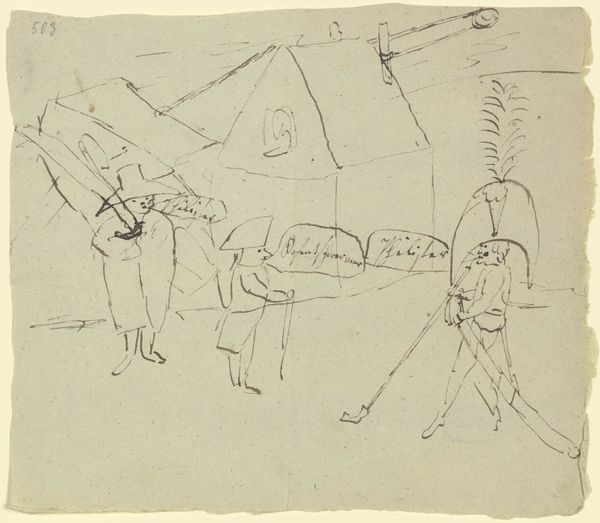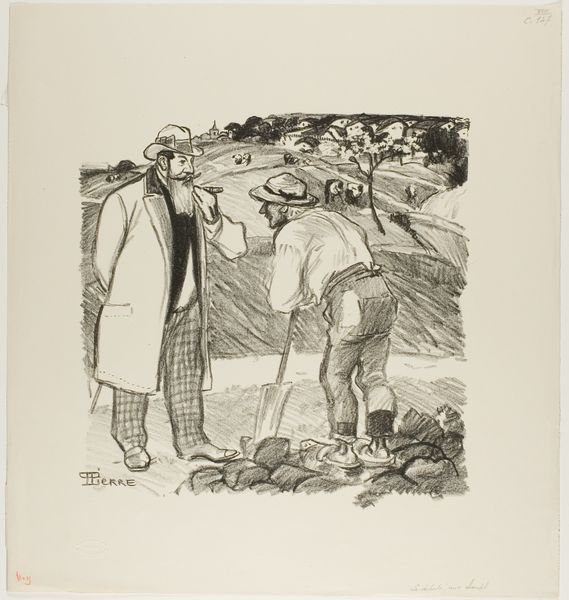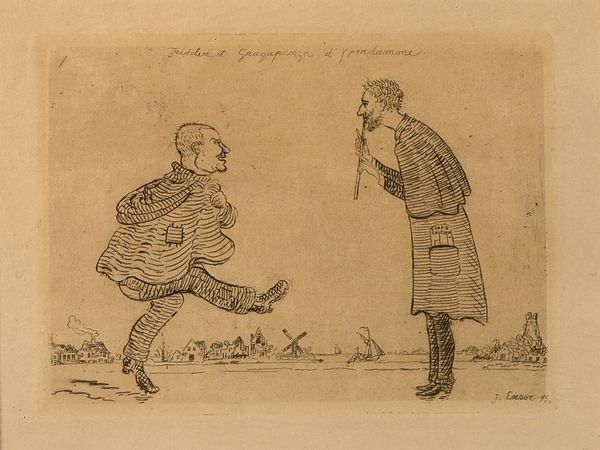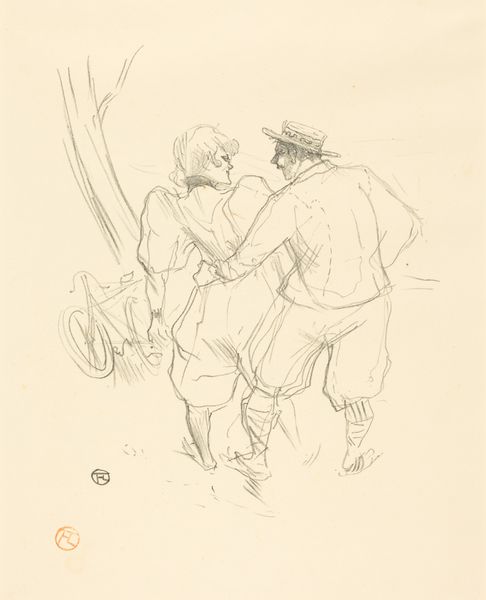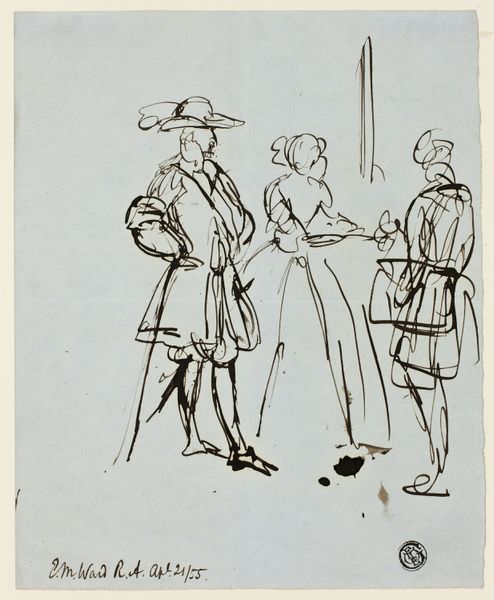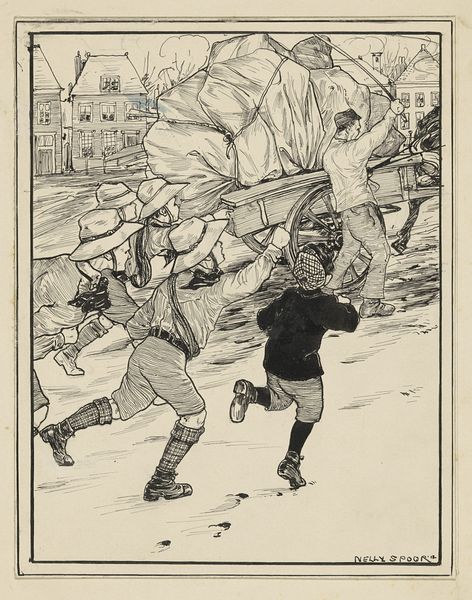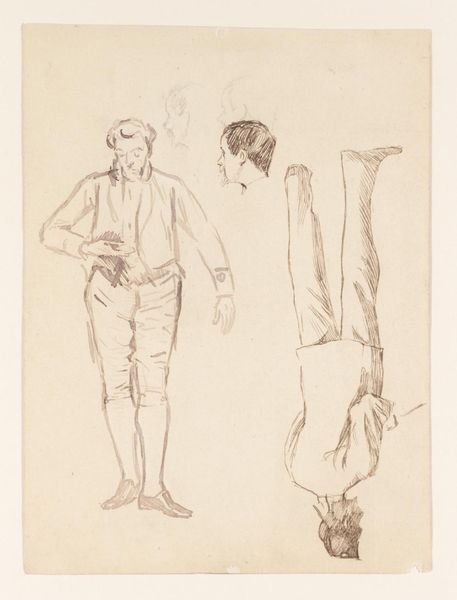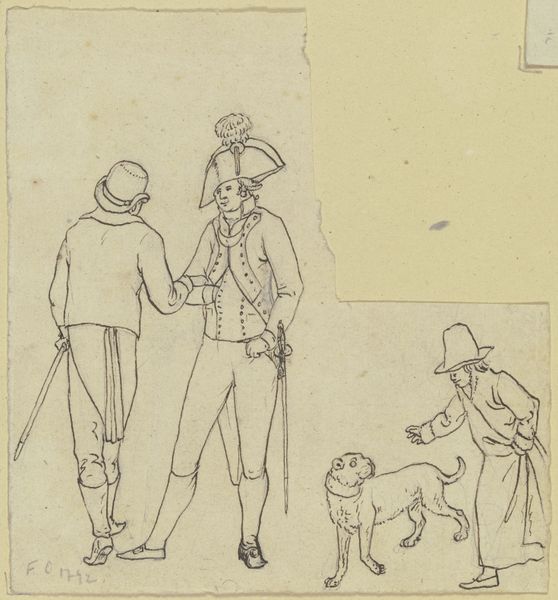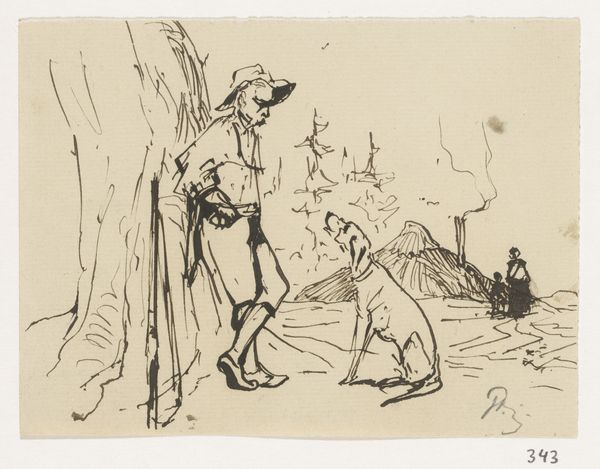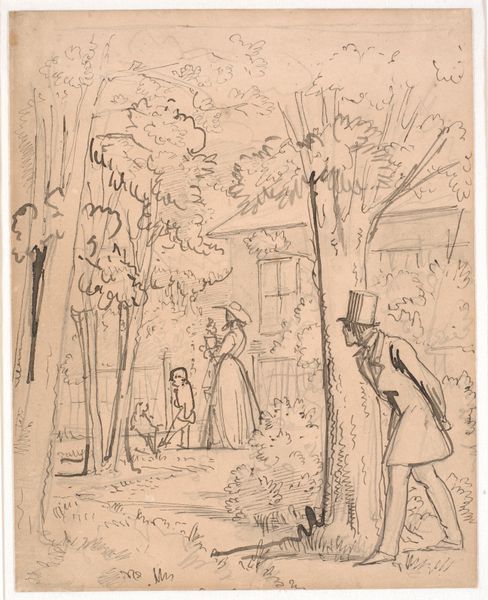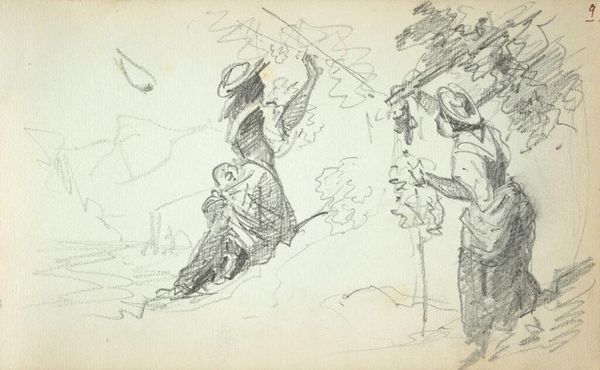
drawing, pen
#
drawing
#
comic strip sketch
#
imaginative character sketch
#
quirky illustration
#
caricature
#
cartoon sketch
#
figuration
#
personal sketchbook
#
sketchwork
#
wedding around the world
#
ink drawing experimentation
#
soldier
#
symbolism
#
sketchbook drawing
#
pen
#
genre-painting
#
storyboard and sketchbook work
Dimensions: height 168 mm, width 232 mm
Copyright: Rijks Museum: Open Domain
Editor: This drawing, "Twee op elkaar staande zwervers groeten een militaire officier," from 1902 by Carl Rögind, is made with pen. It's striking how the artist uses simple lines to create such a satirical mood. What do you see in this piece that I might be missing? Curator: It's interesting you pick up on the satirical mood so quickly. Looking at this piece, I see a commentary on social hierarchy and perhaps even a critique of the military itself. Consider the power dynamics: two seemingly impoverished men, literally stacked beneath each other to appear taller, salute a military officer. How do you interpret the landscape? Editor: Well, with the church in the background, and given that it's 1902, I initially read the setting as an almost idyllic European scene, before taking into account that the idyllic surface is challenged by the interaction among the characters... but the two vagrants look caricatured to an extent. Curator: Exactly! The artist uses caricature to expose the absurdities of the social order. The church backdrop, while seemingly idyllic, is in direct contrast to the reality faced by the men. And, it may speak to complicity within these established social norms. Have you considered how class intersects with national identity in this work? Editor: I hadn't fully considered it, but now that you mention it, the soldier represents the state, doesn't he? And the two men seem to be doing whatever it takes to…participate, even in a way that demeans them? Curator: Precisely. They’re enacting a performance of patriotism, even if it means sacrificing their dignity, or literally, their stability. The drawing becomes a powerful statement about who belongs, and at what cost. What does the notion of "service" become if coerced, in your eyes? Editor: That's fascinating, I never thought of it that way before. Now, the drawing reads very differently. Curator: It’s amazing how much historical context can influence our understanding of art, isn't it? We bring to the table our knowledge, feelings and personal investments, don't we?
Comments
No comments
Be the first to comment and join the conversation on the ultimate creative platform.
